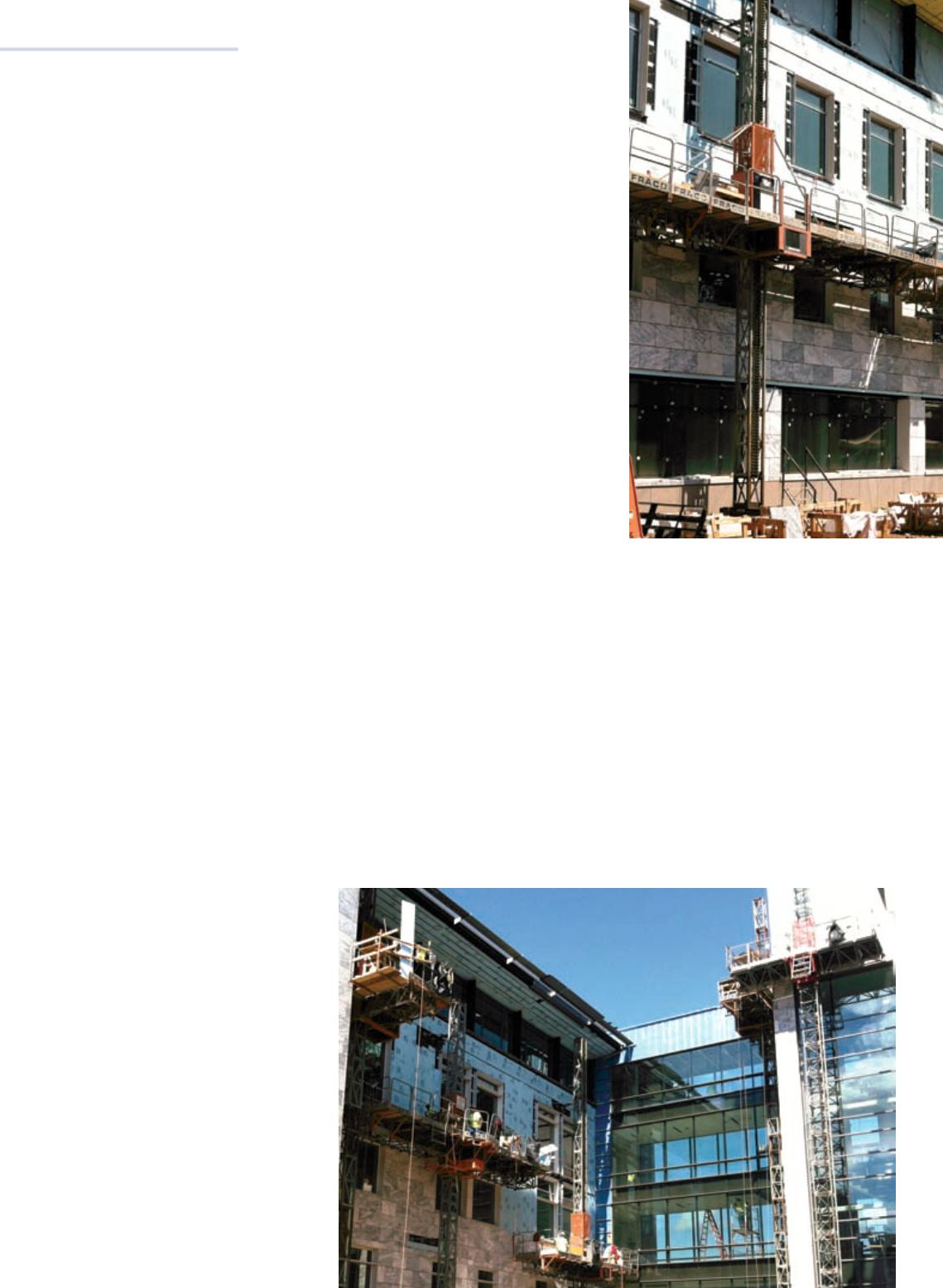
MASTS AND HOISTS
20
ACCESS, LIFT & HANDLERS
JULY-AUGUST 2013
like Madison Square Garden,” Susa says.
"We are continuously developing and
improving our products to keep pace with
current market trends and requirements of
our customers,” Susa says. “Our best-selling
product currently is big, fast and powerful
machines that we supply to North America in the
7,000-pound and 300 fpm category. We have
started developing a new product line, but it is
too early to reveal details.”
Getting to work
Across North America, most suppliers of mast
climbers are reporting a higher utilization in
recent months – and so are end-users.
According to O’Shea with Hydro-Mobile, the
Northeast is showing encouraging growth,
with rental companies reporting 60-70 percent
utilization. The Southeast is reporting similar
utilization numbers and mast climbing work
platform (MCWP) owners are augmenting their
own equipment with rental units again, in
significant volume, and similar numbers exist
from the Florida panhandle to Texas. California
and the Northwest are still relatively quiet for
MCWPs, but this is not necessarily a result of
A
few months ago, Kevin O’Shea, director
of safety and training at Hydro-Mobile,
put it plainly: “There is no good time for
a recession, but there are worse times than
others, and the mast climber industry was in the
beginnings of a significant growth phase with
the recession came along.”
Across North America, mast climber and
hoist companies were tapping into new
markets, debuting new products and reaching
out to new territories. When the economic
emergency brakes were hit, though, a number
of redundancies and causalities sliced through
companies, leaving gaping gashes where
commercial viability had once been.
Today is another story
The mast climber, construction hoist and
related markets have bounced back, with many
debuting innovative answers to problems. One
company leading the way is Stros, a Czech
Republic-based OEM who has entered the North
American market by storm.
“The personnel and material hoist business is
outstandingly good for us right now, especially in
New York and Toronto,” says Ondrej Susa, Stros
sales manager. “The market is definitely better
than last year and possibly better than ever
before. We have been receiving inquiries from
other parts of North America, as well, so there is
potential for business elsewhere.”
Stros recently received an order for unis to be
supplied to a prestigious project in New York City
called the East High Rise Complex in Hudson
Yards. The deal included four dual hoists, each
with a capacity of 7,000 pounds, lifting speeds
of 300 fpm and heights reaching 800 feet.
“Our equipment typically works on new high
rise buildings, but it is also used for remodeling
or repairs of existing high rise buildings, such as
the Empire State Building or low-rise buildings
the recession since the West has always been a
weaker market for these types of units, O’Shea
says, but it also has a significant hoist and
transport sector.
“Many of the more significant projects in the
Southeast and panhandle area are education
and health influenced, such as hospital and
school construction, which are both significant,”
O’Shea notes. “Another increasingly important
rental market is power station refurbishment
with a large number of cooling tower repair
projects and smokestack demolitions.”
These projects require a great deal of
engineering planning and manufacturer support
and these types of refurbishments tend to be
of longer duration, providing the opportunity
for long term cash flow and good overall fleet
utilization numbers.
With new products, markets and collaborations underway,
the mast-related industry is trending upward.
Lindsey Anderson
reports on all the happenings.
Market
penetration
At the peak of the Mastclimbers/Emory
Health Care project there were close to 60
masons working on the platforms. Work
started in April 2012, and the project was
completed in November 2012.


